For many years, black jelly has been considered the "black gold" of the border region of Lang Son, bringing in hundreds of billions of VND each year. Identifying this as a crop with high economic efficiency, the province has included black jelly in the list of key crops of the province and directed its development into a concentrated production area. However, in the past 2 years, the price of black jelly has dropped sharply, and consumption has been difficult, causing many households to lose interest, even "turning their backs" on jelly. As a result, the area and output of black jelly in the whole province have seriously decreased. How to regain the value of "black gold", improve the economic efficiency of this crop - the desire of jelly growers is also a requirement for local authorities and sectors.
Image scales to fit text
The area, output, and economic value of black jelly increased sharply after the Protocol was issued, bringing joy and great expectations to jelly growers in Lang Son province. However, the joy was short-lived, starting in 2022, due to the impact of the prolonged COVID-19 pandemic and a number of other reasons, the consumption of black jelly encountered many difficulties. Since then, many households have "turned their backs" on this crop, causing the area and output of jelly to decline seriously.
In 2022, the area of black jelly trees in the province reached the highest ever. However, only a short time later, due to the impact of the epidemic, the export of black jelly encountered difficulties, businesses and traders temporarily stopped purchasing or only purchased in small quantities.
Image scales to fit text
In late August 2024, we had the opportunity to visit Hoa Tham commune, Binh Gia district. At this time, many households in the commune had finished harvesting black jelly for more than a month, but no traders had come to buy it.
Mr. Nguyen Tuan Uy, Chairman of the Commune People's Committee, recalled: In previous years, at this time, the road in front of the Commune People's Committee headquarters was bustling with trucks coming in and out to buy jelly, and from the beginning, the commune could smell the fragrant smell of dried jelly. But in the past 2 years, that bustling atmosphere is no longer there. There was a business that came to the commune to discuss the issue of purchasing dried jelly products for the people at a stable price, higher than the general market price; however, after that, the business "went away and never returned", so the black jelly that the people produced still had to rely on private traders to collect.
For many years, Mr. Hoang Van Sy's family in Vinh Quang village, Hoa Tham commune has maintained growing 7 sao of black jelly on rice fields. However, since 2022, the price of jelly has dropped sharply (from 30,000 to 10,000 VND/kg), so his family only grows 4 sao of black jelly. Up to now, 4 sao of jelly have been harvested with a yield of about 1 ton; the family is still carefully preserving it in the warehouse waiting for the price to increase.
Mr. Sy shared with dismay: Since I harvested until now, no traders have come to buy. Through market price research, I know that the current price of dried jelly is only 15 thousand VND/kg or less, with this price, the efficiency is only equal to growing corn and rice, while growing jelly is much more difficult. I am waiting to see if the price of jelly will increase in the future.
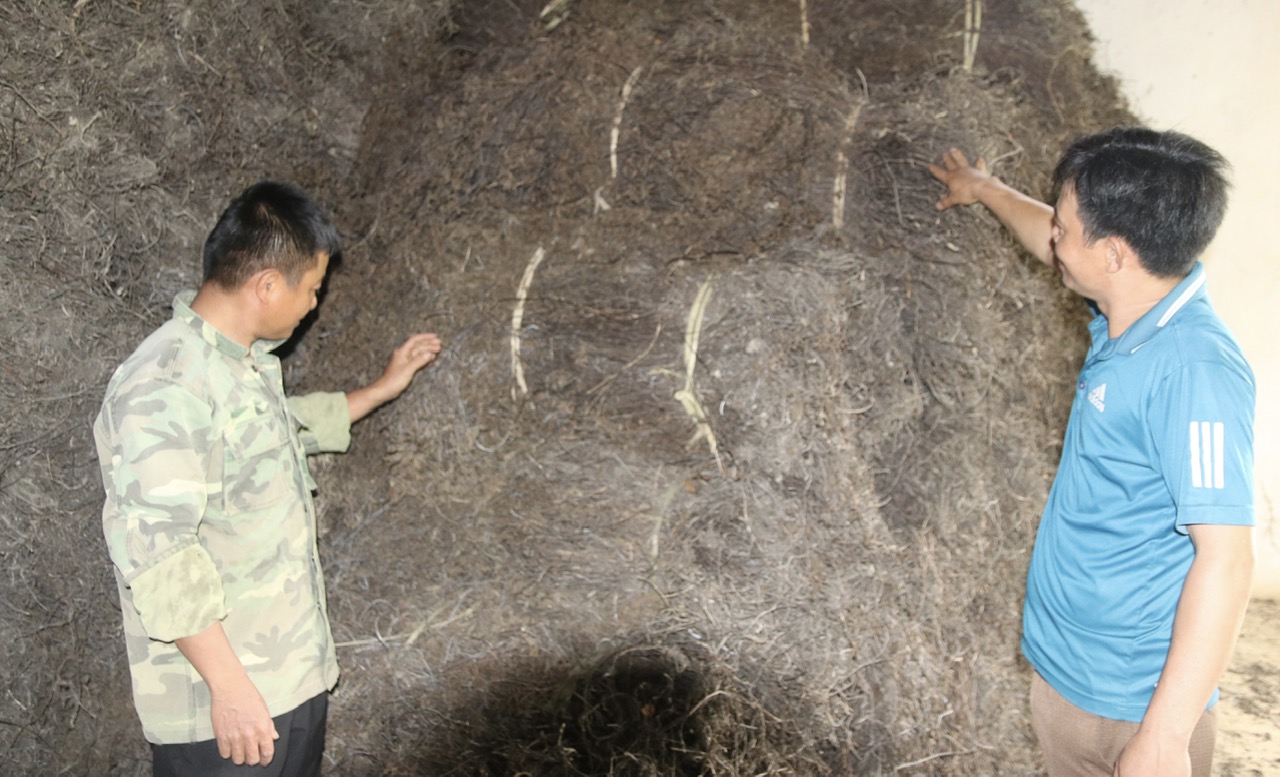
People in Vinh Quang village, Hoa Tham commune, Binh Gia district check black jelly after harvest.
Not only Mr. Sy but many other black jelly growers in Trang Dinh, Binh Gia, and Van Lang districts are also in a state of anxiety when the price of black jelly drops. People feel sorry if they sell it cheap, but if they don't sell it, it won't last long.
Ms. La Thi Lien, Na Tha village, Kim Dong commune, Trang Dinh district confided: My family has been growing jelly for about 15 years now. This 2024 jelly crop, my family planted 3 sao and harvested about 800 kg. However, currently, the price of jelly is very low, only 12-13 thousand VND/kg, so I have not sold it and in fact, no one has asked to buy it. Last year's crop, initially, the price of jelly was 20 thousand VND/kg but my family did not sell it because they were waiting for a higher price, but the longer we waited, the more the price of jelly decreased, in the end, I had to sell jelly for 10 thousand VND/kg. With the current situation, I am worried that jelly prices will continue to fall.
According to analysis by the functional sector, the area and output of black jelly in Lang Son has increased sharply in recent years, but purchasing power in the domestic market has not changed much, the consumption of black jelly products is still mostly exported to the Chinese market.
Mr. Nguyen Trong Nghia, Deputy Director of the Department of Industry and Trade of Lang Son province, said: Although the industry has implemented many solutions to promote and consume black jelly products, due to the impact of the COVID-19 epidemic, China has restricted trade, causing Vietnam's black jelly exports to this market to decline.
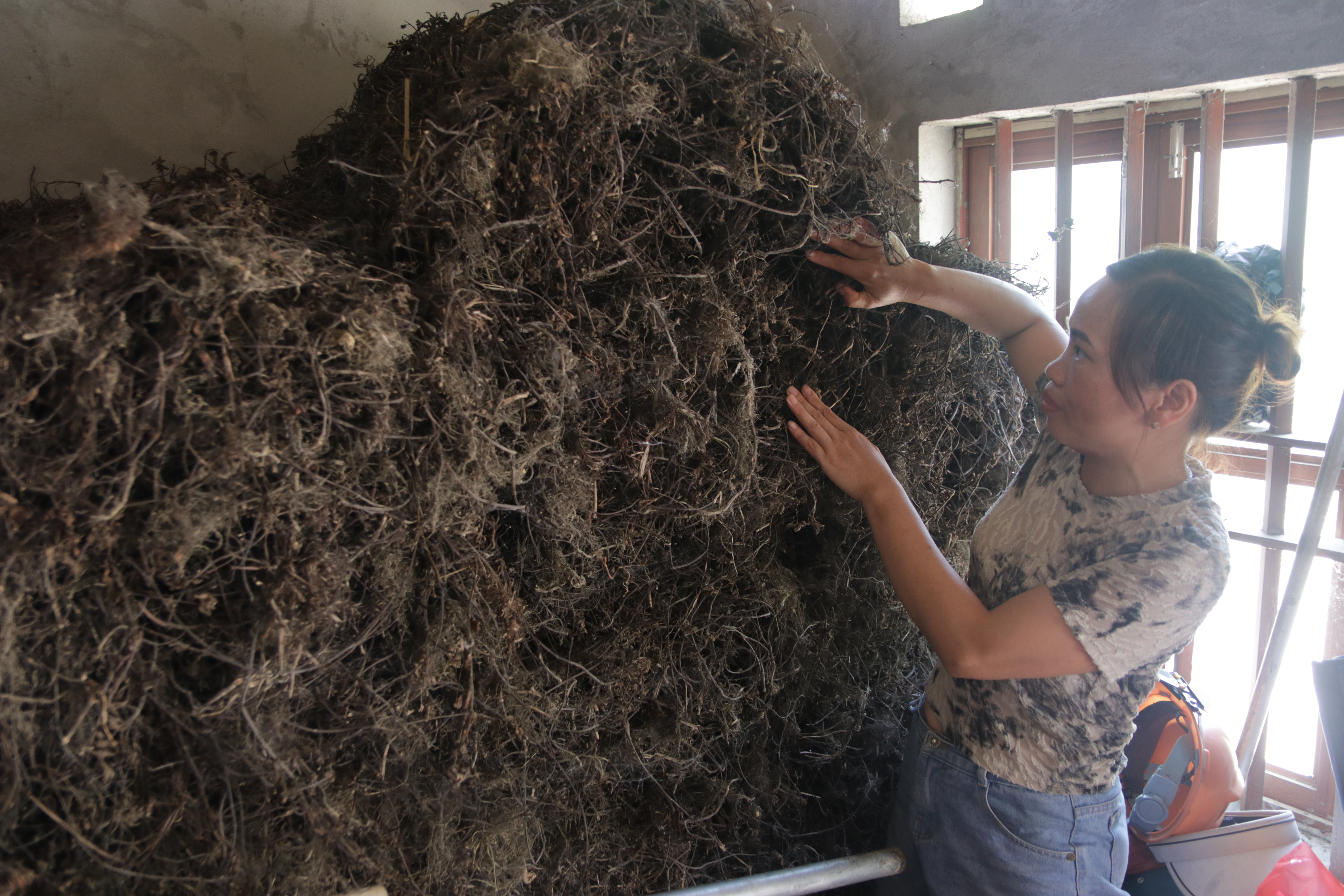
People in Na Tha village, Kim Dong commune, Trang Dinh district check jelly after harvest waiting to sell.
In addition to the above reasons, according to representatives of some businesses, black jelly purchasing facilities and authorities of some communes in Trang Dinh and Binh Gia districts, the gloomy black jelly market is also due to the decline in demand for Chinese products. Some businesses have signed contracts to consume dried black jelly with people, but due to difficulties in exporting, businesses have limited their purchases.
The output is narrowed, businesses and traders do not buy or only buy in very small quantities, leading to a sharp decrease in the price of black jelly. According to calculations by jelly growers, the price of black jelly has dropped to 10-15 thousand VND/kg as recently, after deducting costs, people do not make a profit while having to spend a lot of effort to take care of it. Therefore, many households are no longer interested in growing jelly.
Due to the impact of the COVID-19 pandemic, the operations of factories in China have been suspended, so the demand for dried black jelly has also decreased. Previously, each year, the company purchased from 4,000 to 5,000 tons of dried jelly for export. However, in the past 2 years, the company has only purchased over 1,000 tons/year.
Mr. Nguyen Van Kinh, Director of Hai Binh Agricultural Products One Member Co., Ltd., De Tham Commune, Trang Dinh District
It must also be said that, in addition to the impact of the epidemic, China's demand for black jelly has decreased, and the difficulty in consuming black jelly is also caused by the jelly growers themselves.
Ms. Hoang Thi Anh, Head of the Department of Agriculture and Rural Development of Binh Gia district, said: Immediately after the Protocol on exporting black jelly was issued, the department coordinated with relevant agencies and units to organize propaganda, mobilize, train and guide people to grow black jelly to ensure regulations for exporting products. However, during the production process, some households did not follow the prescribed techniques well, so the products did not meet export requirements.
Image scales to fit text
Unable to sell or having to sell jelly at too low a price, from 2023 until now, people in many places have reduced the area of black jelly planting and switched to growing other crops, some households even stopped growing jelly altogether.
Ms. Dinh Thi Bich, Na Tha village, Kim Dong commune, Trang Dinh district shared: Previously, each crop my family maintained growing 5-6 sao of black jelly, some years, the price of black jelly reached nearly 40,000 VND/kg, bringing high and stable income for the family. In 2022, the family harvested 1.3 tons of black jelly but only sold it for 9,000 VND/kg. At that price, the family did not make a profit, even suffered a loss, so from 2023 onwards, the family decided to stop growing jelly and lease the land to others to make a nursery for forestry seedlings.
Not only Mrs. Bich's family, many other households in Kim Dong commune have also abandoned or reduced the area of agar growing. Specifically, in 2021, the area of agar growing in the commune was 243.37 hectares with 100% of households growing (the commune has 637 households), but by 2024, the area of agar growing in the commune was only 132 hectares with over 60% of households growing.
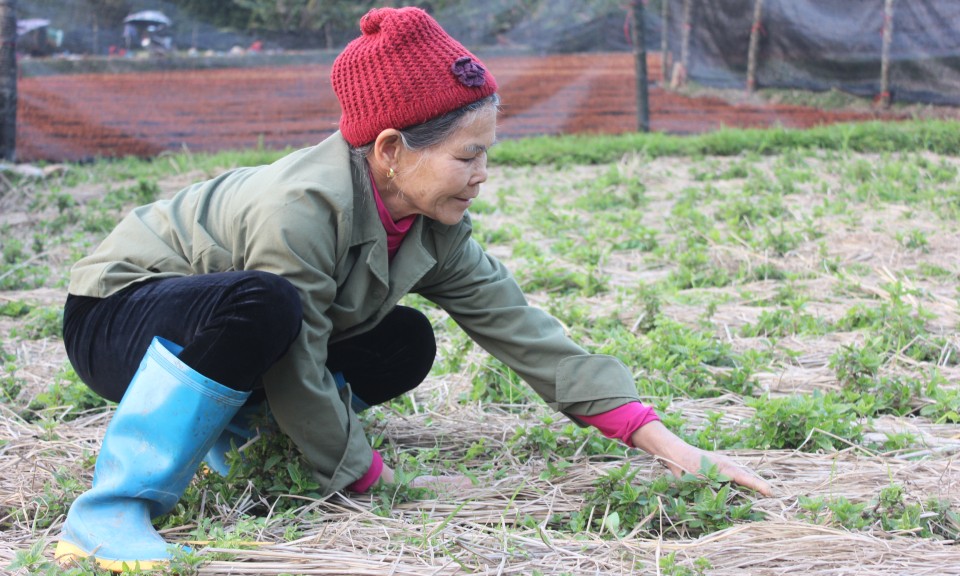
People of Kim Dong commune, Trang Dinh district take care of the black jelly crop in 2023
In Vinh Quang village - one of the villages that used to grow the most jelly in Hoa Tham commune, Binh Gia district, from 102 households growing jelly in 2021, now only 30 households still grow it, the largest household still has about 4 sao while the smallest household only grows 100-200m2. This situation also occurs in other villages in Hoa Tham commune.
Mr. Nguyen Tuan Uy, Chairman of Hoa Tham Commune People's Committee, said: In 2021 and 2022, the area of black jelly cultivation in the commune fluctuated around 150 hectares. However, due to unstable output and fluctuating jelly prices, in the past 2 years, many households have switched to growing other crops such as rice, corn, squash, winter melon, etc. Therefore, in 2024, the total area of black jelly in the commune is only nearly 11 hectares. From 9 growing area codes, up to now, the commune has only maintained 1 code.
Mr. Nguyen Tuan Uy, Chairman of Hoa Tham Commune People's Committee, Binh Gia District, shared about the situation of the decline in black jelly growing area.
The fact that people in many places have reduced the area for growing jelly or completely abandoned growing jelly has caused the area and output of jelly in the whole province to decrease seriously in the past 2 years. Specifically, in 2023, the area for growing black jelly in the whole province was 2,385 hectares with an output of 12,500 tons, worth about 180 billion VND; from the beginning of 2024 until now, the area for growing black jelly is 1,245 hectares, the output is 6,661 tons with an estimated value of 66 billion VND - a sharp decrease compared to 2021 and 2022.
Of which, Trang Dinh district has the sharpest decrease in area. Specifically, in 2023, the area of black jelly in the district is 1,300 hectares, a decrease of 1,200 hectares compared to 2022 and from the beginning of 2024 until now, the area of black jelly in the district is over 700 hectares.
Ms. Nong Thi Kim Oanh, Head of the Department of Agriculture and Rural Development of Trang Dinh district, shared about the development of black jelly plants in the district.
Low jelly prices have caused difficulties not only for jelly growers but also for units and facilities that purchase and package black jelly for export.
Ms. Do Thi Kim Oanh, Director of Do Thi Kim Oanh Import-Export Production and Investment Company Limited, Hung Dao Commune, Binh Gia District, said: The company started purchasing black jelly from people since 2022. We also really want to buy at a high price for jelly growers, however, we are dependent on the demand and prices of Chinese enterprises. Currently, the area of black jelly in Binh Gia district has decreased sharply, the price is low so people do not want to sell, so the enterprise has to purchase in Trang Dinh district; from there, there are additional costs of transportation, human resources, etc.
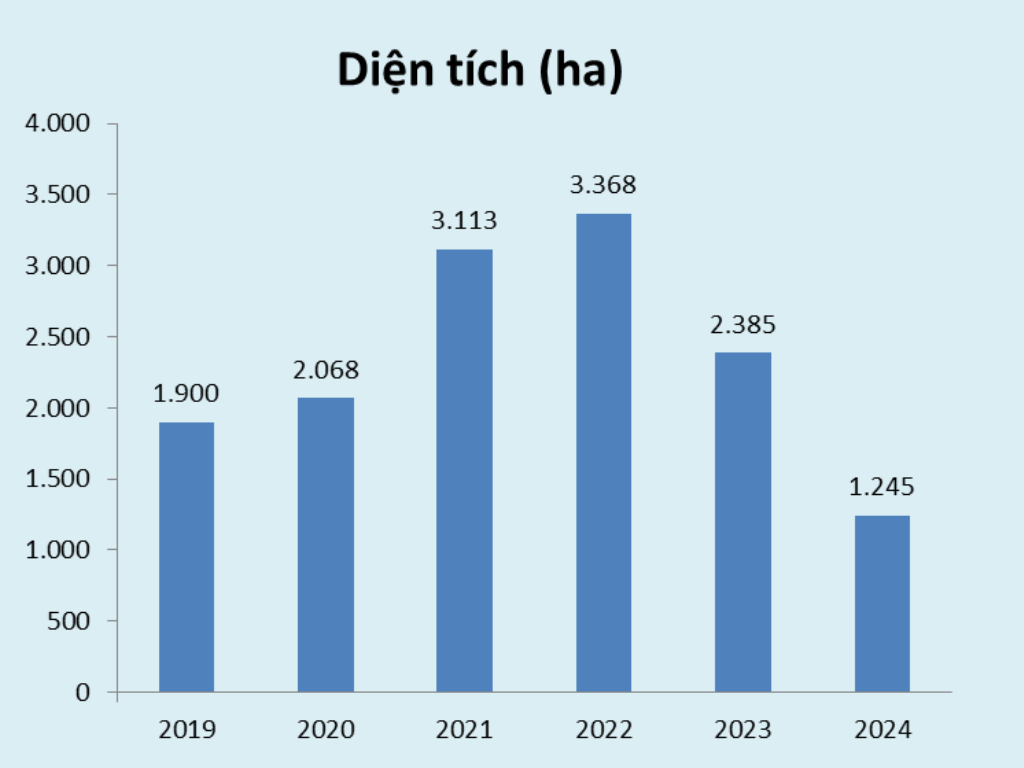
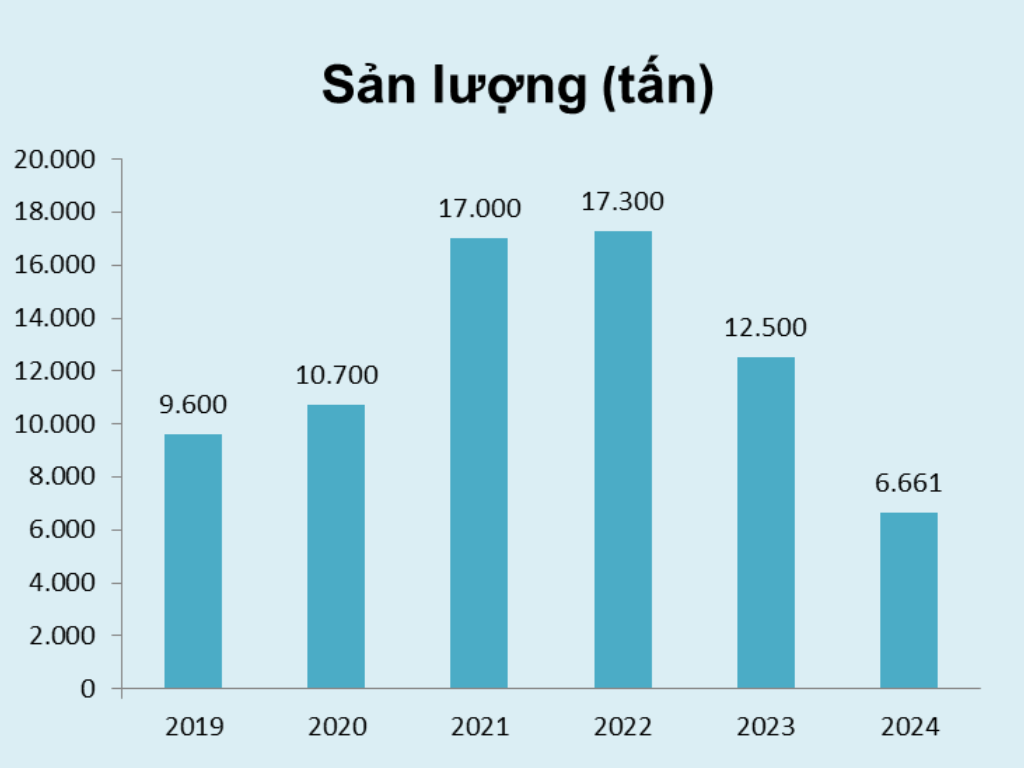
Comparison chart of black jelly area and output from 2019 to present (2024 up to the end of the first 6 months of the year)
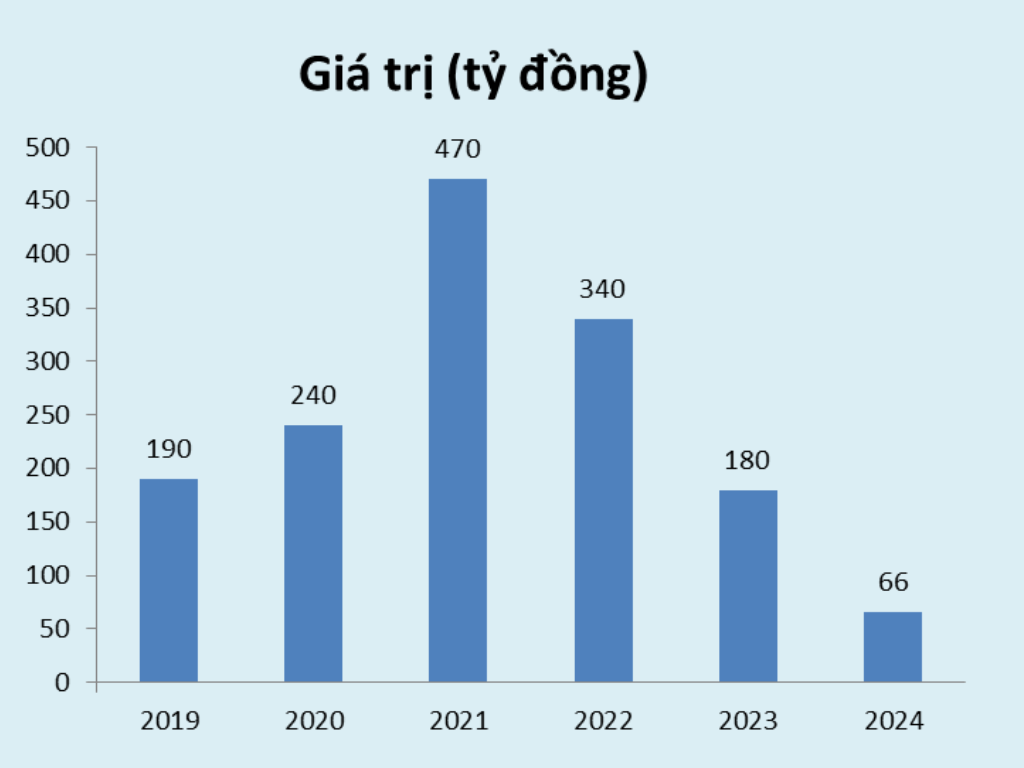
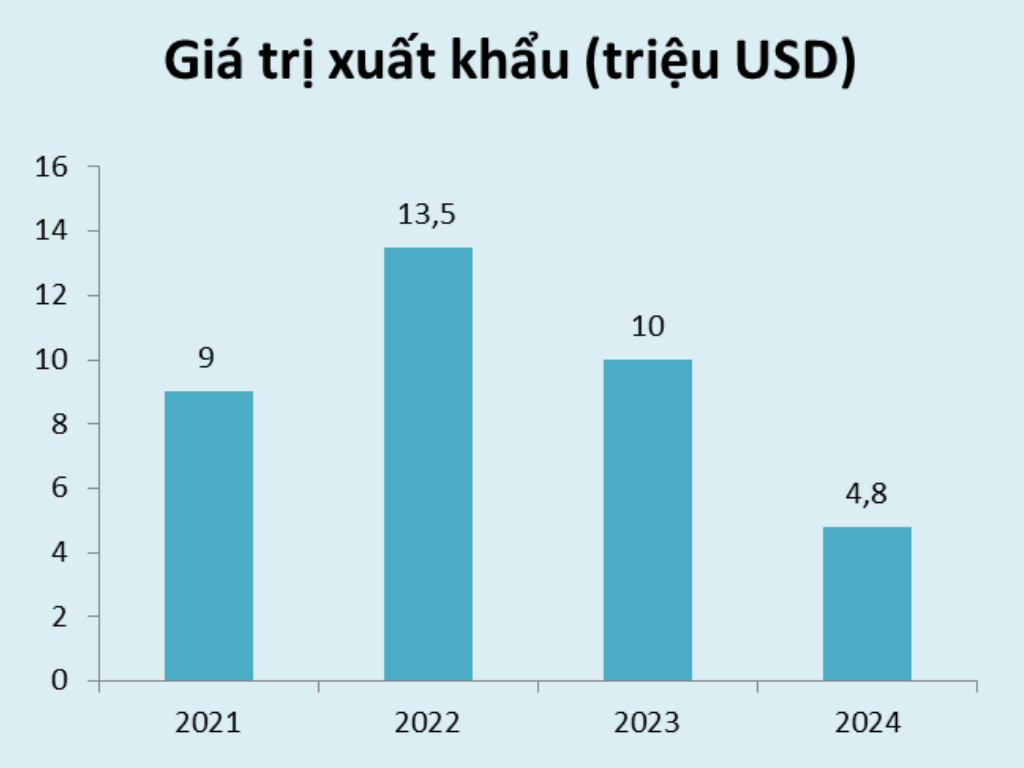
Left photo: Black jelly value from 2019 to present (2024 up to the end of the first 6 months of the year).
Right photo: Black jelly export value from 2021 (after the Protocol) to present (2024 up to the end of the first 6 months of the year)
Black jelly is identified as the main crop and strength of the three districts of Trang Dinh, Binh Gia, Van Lang in particular and Lang Son province in general.
However, with the huge decrease in acreage and the current unstable prices, it is unknown how many farmers will turn their backs on jelly in the future.
Meanwhile, the potential and advantages for developing black jelly in Lang Son province are still very large and not available everywhere. Therefore, finding a long-term direction for sustainable development of production areas continues to be a difficult problem that needs to be solved soon so that people can confidently stick with this crop.
(To be continued)
Perform:
BAO VY - DINH QUYET - HOANG CUONG
Source: https://baolangson.vn/tim-lai-gia-tri-vang-den-ky-3-niem-vui-ngan-chang-tay-gang-5024019.html





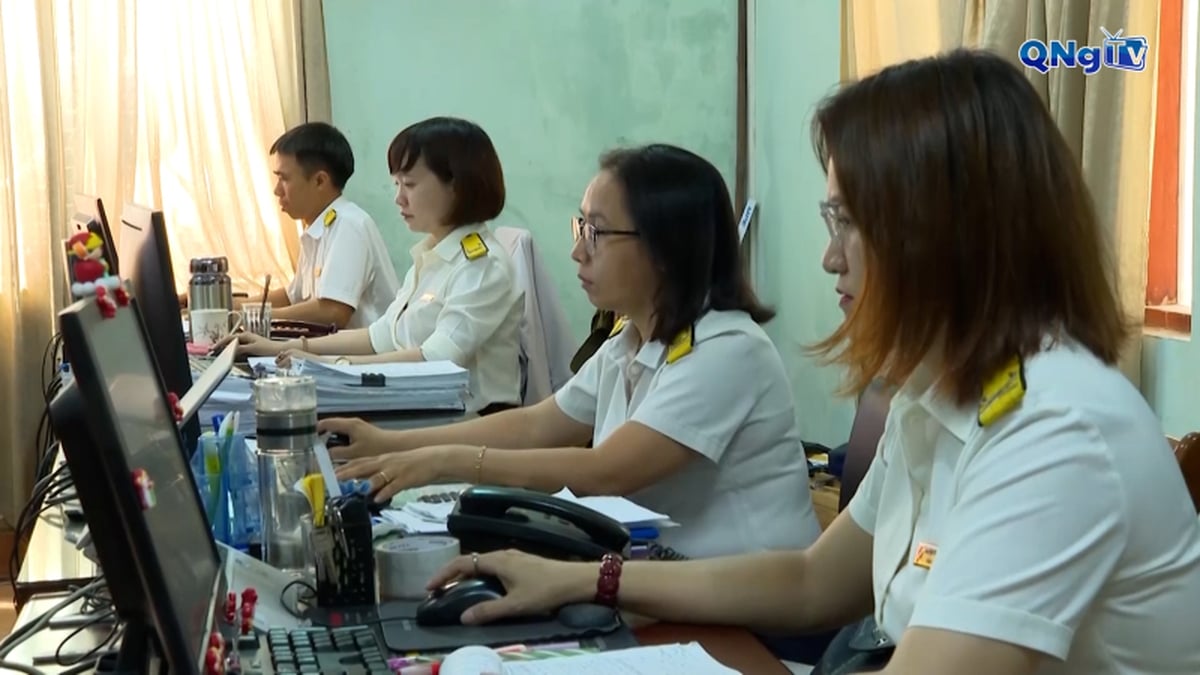

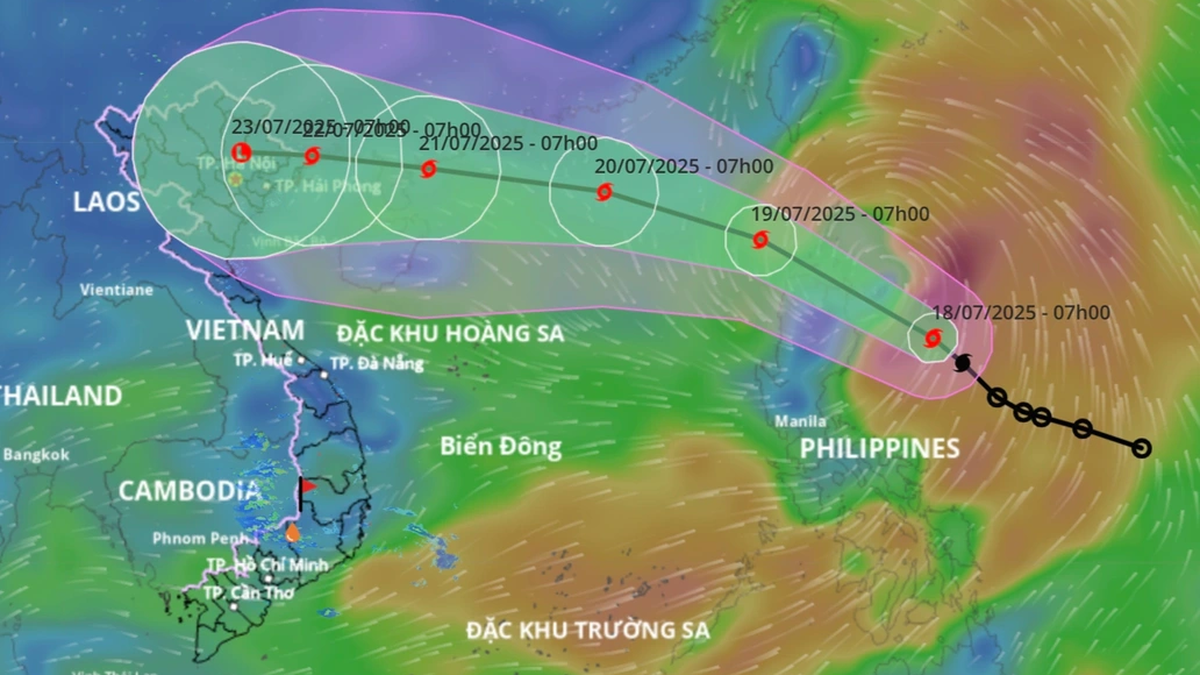


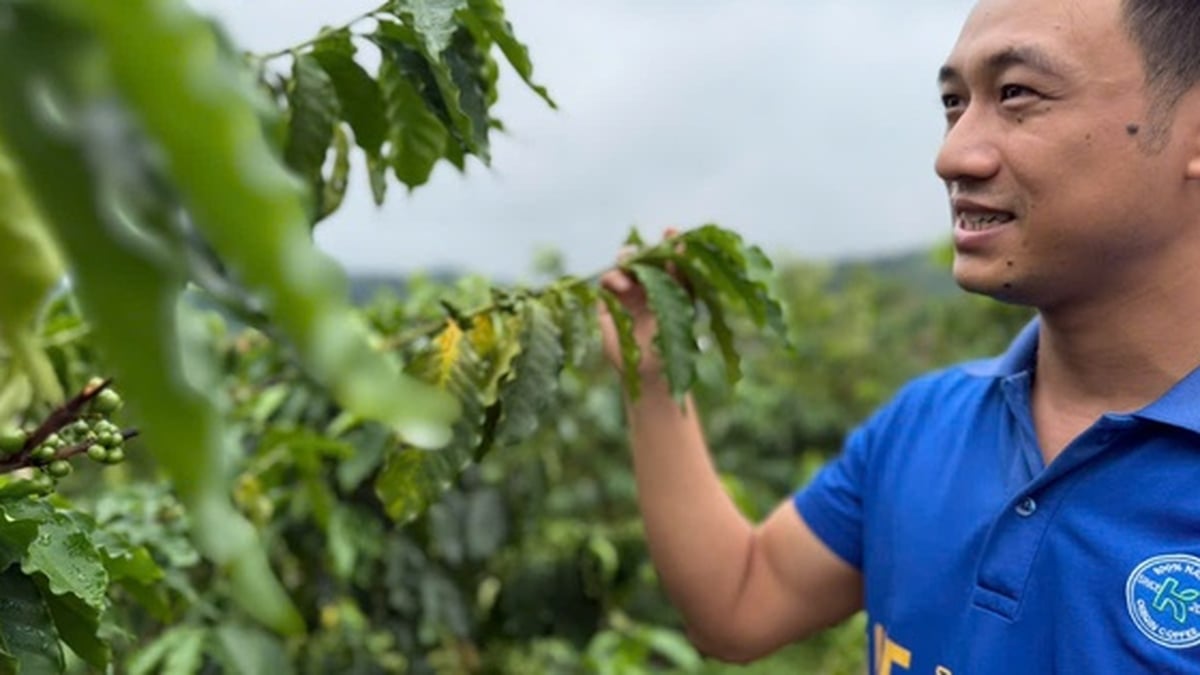



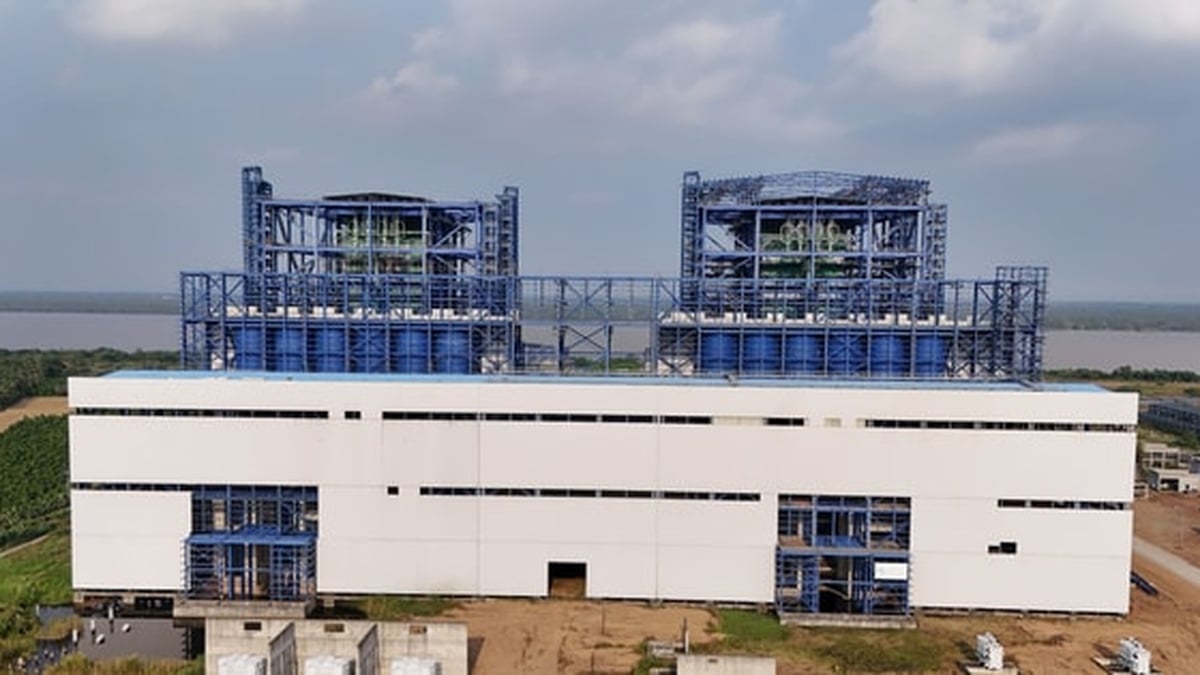

























































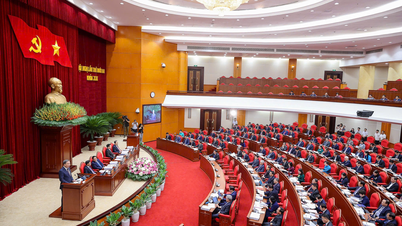
























![[Infographic] In 2025, 47 products will achieve national OCOP](https://vphoto.vietnam.vn/thumb/402x226/vietnam/resource/IMAGE/2025/7/16/5d672398b0744db3ab920e05db8e5b7d)







Comment (0)